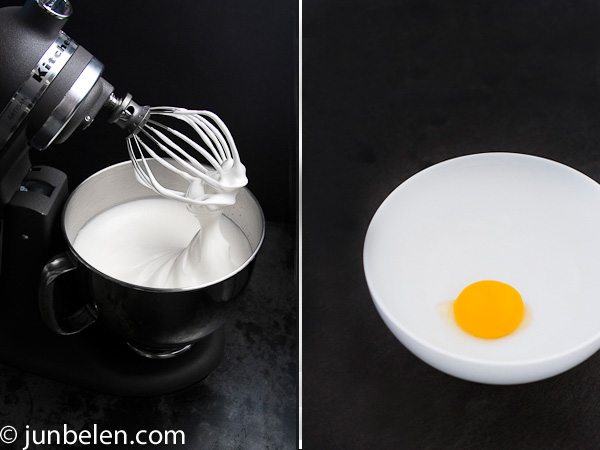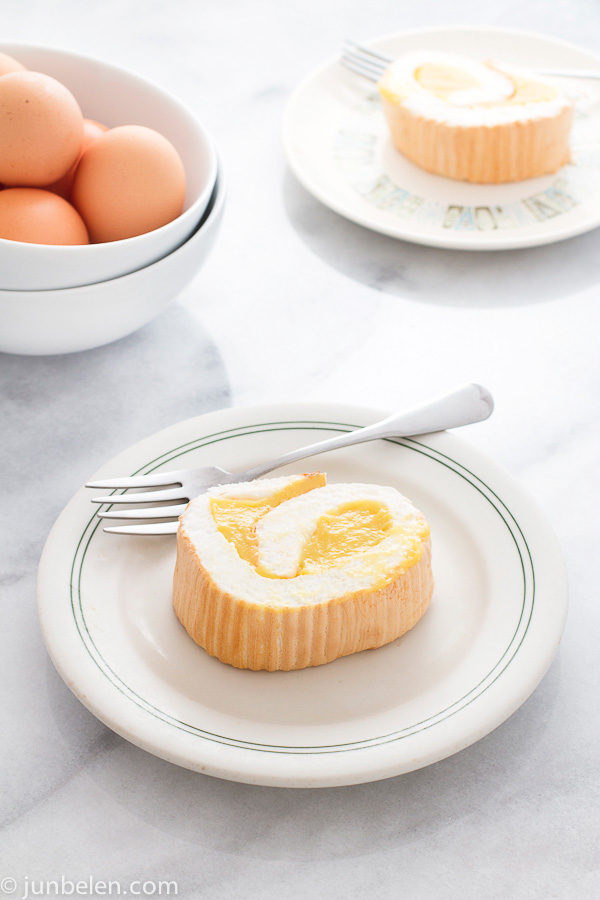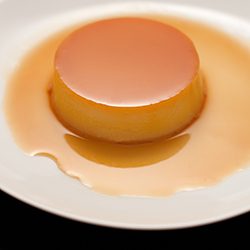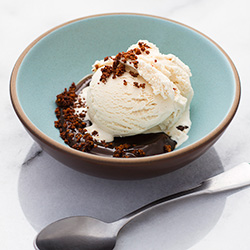The stone bench at the north side of the church next-door to my elementary school was our favorite lunch spot. Everyday at noon, my mom and I got together there for a picnic lunch. I was in first grade back then, which meant I had to be in school for practically the entire day, from seven in the morning till three in the afternoon. It was the first time I had to be away from home for that long and my mom insisted on bringing me hot, home-cooked rice meals everyday instead of sending me off to school with a packed lunch. I know, my mom doted on me. She doted on her único hijo, her only son.
We sat on nylon folding stools under a stout, shady tree. The bench was our table, which we covered with a worn-out tablecloth. She always prepared a hearty lunch of steamed rice and a meat dish that’s either fried or stewed like adobo or menudo packed in round plastic containers. On hot, sunny days, she made pork spare rib sinigang. The clear, sour broth flavored with tamarind and tomatoes was always refreshing. She never made vegetable guisado, which I didn’t really care for when I was little. I always left sautéed chayote or long beans untouched and picked on shrimp that came with the unappreciated greens.
But the best part of our picnic lunches was the sweet end — himagas [hee-mah-gahs]. Anong pang-himagas? What’s for dessert? I always asked my mom excitedly the moment I saw her. My mom and I both have an insatiable sweet tooth. We share a deep affection for all things sweet but she is in a league of her own. She has this habit that some people may find strange but I find totally endearing. She doesn’t wait till the very end and takes her dessert with her meal. A spoon of coconut jam for every spoon of rice and fish. A bite of lacatan banana for every bite of adobo. For her, a meal is incomplete without dessert.
The simplest of Filipino desserts is fresh fruit picked at its peak. Mangoes from Zambales come to mind. Lacatan and finger-sized señorita bananas that are so much sweeter than the common cavendish. Papayas sprinkled with calamansi. Pineapples, soursops, rambutans, and mangosteens. Fruits can also be sweetened by simmering them in a sugar syrup made simply by mixing refined or muscovado sugar with water. Halo-halo, the quintessential Filipino dessert, is a veritable mix of sweetened saba bananas, jackfruit, and macapuno.
Then there are the native cakes made with sticky rice or sticky rice flour. Cakes like biko, suman, puto, kuntsinta, and bibingka differ subtly from island to island and even from town to town. Some are steamed while others are cooked over hot coals and recreated in ovens and toaster ovens. Some are wrapped in banana leaves while others aren’t wrapped at all. When not sweetened, they are rolled in or dusted with plenty of sugar and ribbons of coconut.
And the most decadent of Filipino desserts are those borrowed from Spain like ensaimada — brioche basted with butter and sprinkled with sugar, leche flan — caramel custard, and the ambrosial Brazo de Mercedes — pillowy meringue rolled and filled with thick, rich custard. Brazo, as I fondly call it, is truly decadent. A sheet of meringue topped with smooth custard is rolled like a jelly roll into a log or “brazo” (Spanish for arm) and then sliced and served with coffee or tea for himagas or merienda. It may be too sweet for some but for me and my mom nothing’s ever too sweet.
Brazo de Mercedes Recipe
Recipe from Reynaldo G. Alejandro’s Authentic Recipes from the Philippines
For the custard
1 cup sweetened condensed milk
2 tablespoons unsalted butter
1 teaspoon vanilla extract
1/2 cup water
8 egg yolks
For the meringue
10 egg whites
1 teaspoon cream of tartar
1 cup superfine sugar
1 teaspoon vanilla extract
Combine the condensed milk, butter, vanilla extract and water in a saucepan and simmer over low heat until well combined, about 5 minutes. Beat the egg yolks in a small mixing bowl. Place the mixing bowl over a double boiler over low heat. Gradually pour the milk mixture into the bowl with the yolks, stirring to prevent curdling over low heat until the mixture has the consistency of a custard. Remove from the heat and set aside.
Line a 14 x 16 in cookie sheet with greased parchment paper and set aside. Preheat the oven to 350 degrees F. make the meringue by beating the egg whites and cream of tartar with an electric mixer in a large mixing bowl. Gradually add the sugar and continue to beat until the meringue forms stiff peaks. It is important not to overmix the meringue. Then gently fold in the vanilla extract.
Spread the meringue evenly on the lined cookie sheet to form a 1/4-in thick layer. Tread a cake decorating comb lightly on the surface of the meringue to create a ridge pattern. Bake in the preheated oven until browned, about 20 minutes or until the meringue has set.
Remove the meringue from the oven and invert it onto another sheet of greased parchment paper. Peel away the parchment paper on the top and spread the custard evenly on top of the cooked meringue. Roll it carefully to form a log. Brush the top of the log with softened butter and brown again in the oven for 3 to 5 minutes. Remove the log from the oven and slice thinly.
Learn the alphabet of Filipino food through our glossary. So much is lost in translation, I know, but I hope this glossary will help those unfamiliar with Filipino food become more informed.
A is for Achuete
B is for Barako Coffee
C is for Camarón
D is for Dinuguan
E is for Ensaimada
F is for Fish Balls
G is for Gata
H is for Himagas
Anong pang-himagas? What’s for dessert? Does rolling your own meringue faze you a bit? Making Brazo de mercedes is daunting, I must admit. Rolling the meringue gingerly so it won’t tear is truly nerve-racking. Here’s a list of simpler Filipino sweet treats you can try at home.
My mom’s recipe uses a dozen egg yolks. Everyone does flan differently. Using only yolks gives a denser and richer flan similar to tocino del cielo, another classic dessert. Adding whites makes the flan lighter. My mom uses both evaporated and condensed milk but whole milk can be used as well. Candied lime peels are a wonderful garnish for leche flan. In fact, lime zest is sometimes added to the custard mixture to give it that pleasant citrus aroma.
When I think of biko I think of my mom and our forays to the market together when I was a kid. After we methodically meander through the market’s maze of stalls and stuff our bags with whole fish, butchered pork, and fresh produce, we would stop by our favorite kakanin vendor and buy rice cakes for everyone back home — biko, puto, maja blanca, or sapin-sapin — all nestled in coconut oil-lined banana leaves in wide, shallow bamboo baskets called bilao. A plate brimming with sweet rice cakes was a permanent fixture on our kitchen table on Saturday mornings. It was always something to look forward to every weekend. And it still is.
The recipe for coconut jam, or matamis na bao as we call it back home, is incredibly simple and calls for only three ingredients — coconut milk, muscovado sugar, and pandan leaves. Muscovado is unrefined cane sugar. The crystals are coarser and are packed with a more intense and complex molasses flavor. Mix the three ingredients and let it simmer until the milk thickens into jam. Let me warn you, however, that even if the recipe seems simple, making coconut jam demands plenty of time. And when I say plenty, I mean two hours, at the very least. But it isn’t two solid hours of undivided attention, I hope I didn’t scare you. The jam just needs to be stirred frequently and the fire needs to be closely watched so that the milk simmers slowly into a smooth jam. I assure you that your efforts and patience will be rewarded in the end.





